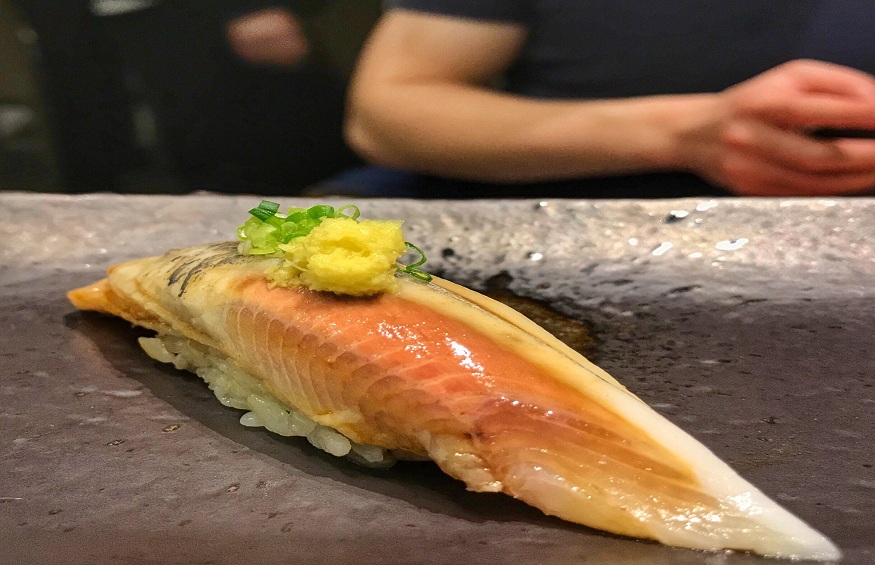Iwashi, the Japanese sardine, is a remarkable and beloved fish that has captured the hearts and taste buds of people worldwide. This delectable seafood is known for its unique qualities, exceptional flavor, and a wide range of culinary possibilities. In this article, we will explore the world of iwashi, why it is considered unique, the reasons behind its popularity, the best ways to serve it, the numerous health benefits it offers, tips for choosing the finest iwashi products, and how to ensure the freshness of this prized seafood.

Iwashi: An Introduction
Iwashi, scientifically known as Sardinopsmelanostictus, is a small, silvery fish that belongs to the sardine family. It is native to the waters around Japan, where it has been an essential part of Japanese cuisine for centuries. Iwashi is renowned for its exceptional flavor, versatility, and high nutritional value. Here’s a closer look at what makes iwashi so unique:
- Unique Flavor: Iwashi is celebrated for its rich, umami-packed flavor, often described as a combination of savory and slightly sweet notes. The fish’s high oil content contributes to its distinctive taste.
- Omega-3 Fatty Acids: Iwashi is a significant source of omega-3 fatty acids, particularly eicosapentaenoic acid (EPA) and docosahexaenoic acid (DHA), which are essential for heart and brain health.
- Versatility: Iwashi can be prepared in various ways, such as grilling, frying, pickling, or even consuming it raw as sashimi. Its versatility in the kitchen makes it a sought-after ingredient in Japanese and international cuisines.
- Nutrient-Rich: Beyond omega-3 fatty acids, iwashi is packed with essential nutrients like vitamin D, vitamin B12, and selenium, contributing to its reputation as a nutritional powerhouse.
Reasons People Love Iwashi
Exceptional Taste: Iwashi’s unique and savoryflavor profile has made it a beloved ingredient in a wide array of Japanese dishes, from sushi to stews.
Nutritional Benefits: Its high omega-3 content and nutrient-rich profile make it a superfood, supporting heart, brain, and overall health.
Culinary Versatility: Iwashi can be prepared in various delectable ways, allowing chefs and home cooks to experiment with different culinary techniques.
Cultural Significance: Iwashi holds a special place in Japanese culture, playing a role in traditional celebrations and festivals.
Sustainability: As a small fish with a rapid reproductive rate, iwashi is considered a sustainable seafood choice, aligning with responsible consumption practices.
How to Best Serve Iwashi
Iwashi can be enjoyed in a multitude of delightful ways. Here are some popular methods to serve this beloved Japanese sardine:
Sashimi: Fresh iwashi is often sliced into thin pieces and served as sashimi, accompanied by soy sauce and wasabi.
Nigiri Sushi: Iwashi nigiri sushi features a slice of the fish atop a small bed of vinegared rice, often garnished with a touch of wasabi.
Grilled: Grilled iwashi, seasoned with a dash of salt or a flavorful glaze, is a popular way to enjoy its rich flavor.
Fried: Deep-fried iwashi is a crunchy and delicious treat, often served as tempura or karaage.
Pickled: Iwashi is also pickled in various ways, providing a tangy and savory accompaniment to rice or noodles.
Stews and Soups: Iwashi can be added to stews and soups, infusing a savory depth of flavor into the dish.
Health Benefits of Eating Iwashi
Consuming iwashi offers a myriad of health benefits, making it a valuable addition to your diet:
Heart Health: The omega-3 fatty acids in iwashi support heart health by reducing the risk of cardiovascular diseases and regulating blood pressure.
Brain Function: Omega-3s, particularly DHA, are essential for brain development, cognition, and memory retention.
Bone Health: Iwashi is a good source of vitamin D and calcium, which promote strong and healthy bones.
Eye Health: The omega-3s in iwashi help maintain eye health and may reduce the risk of age-related eye conditions.
Immune Support: The fish’s rich nutrient profile supports the immune system, making it a beneficial addition during cold and flu seasons.
Freshness: Look for iwashi with clear, bright eyes, shiny scales, and a fresh, ocean-like smell. Avoid fish with dull eyes or off-putting odors.
Texture: Fresh iwashi should have firm flesh, with no signs of mushiness or excessive moisture.
Color: The skin should exhibit a silvery sheen, and the flesh should be translucent and have a clean, white color.
Sustainability: Opt for iwashi that is sourced responsibly, as this helps support sustainable fishing practices and the preservation of marine ecosystems.
Packaging: When buying packaged iwashi products, check for proper seals and packaging that prevents leakage and contamination.
Reputation: Purchase iwashi from reputable sources, such as established fishmongers, markets, or certified sustainable seafood vendors.
How to Check the Freshness of Iwashi
To ensure the freshness of iwashi, consider the following steps:
Examine the Eyes: Fresh iwashi should have clear and bright eyes. Dull or cloudy eyes are an indicator of reduced freshness.
Check the Gills: Gills should appear vibrant and pink or red, not brown or dull. Fading gill color suggests aging.
Touch the Flesh: Fresh iwashi should feel firm and spring back when touched. Avoid fish with mushy or overly soft flesh.
Smell the Fish: Iwashi should exude a clean, ocean-like scent. If it smells overly fishy or has an ammonia-like odor, it may not be fresh.
Conclusion
Iwashi, the Japanese sardine, is a remarkable seafood that has captured the hearts of food enthusiasts around the world. Its unique flavor, versatility in the kitchen, and incredible nutritional value make it a cherished ingredient in various culinary traditions. Whether enjoyed as sashimi, grilled, fried, or pickled, iwashi offers a delectable dining experience. Its health benefits and sustainable sourcing further contribute to its popularity. When choosing iwashi, follow the guidelines for freshness and consider its source to ensure a delightful and responsibly sourced culinary adventure. So, next time you explore Japanese cuisine, don’t forget to savor the exquisite taste of iwashi.
